When The Moors Ruled Portugal: Castelo dos Mouros
By 750 AD, the entire Iberian peninsula had been conquered. And when the Moors ruled Portugal, Castelo dos Mouras represented its very strength and vitality. But now? All but forgotten and abandoned by its former Empire, it stands alone.
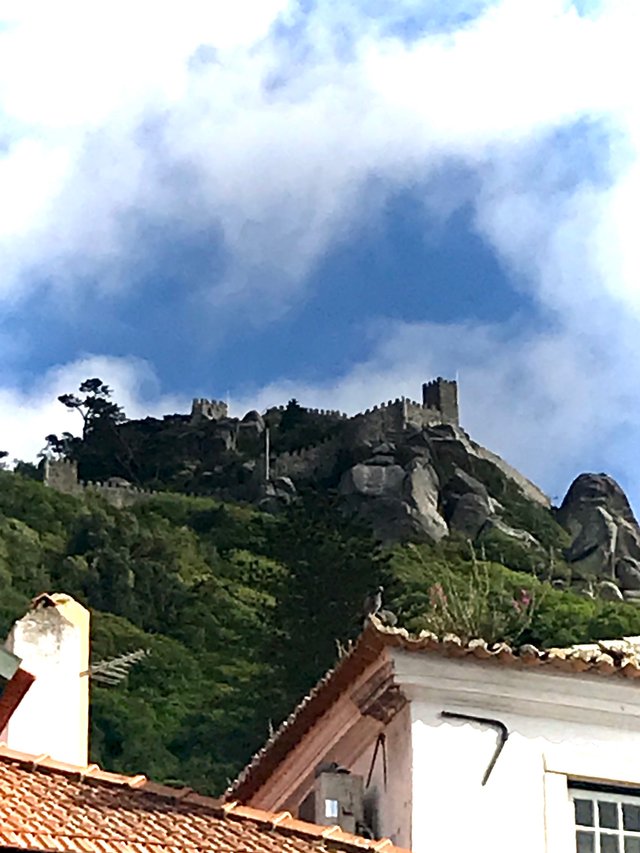
We were eager to get out of Lisbon, the busy, tourist-packed capital, and explore Pena Palace and the coast. We booked an Uber, and soon a retired construction worker picked us up in front of our Airbnb. We crammed into his small economy car and were promptly rolling on the A37 headed west.
In no time, the crowded, paved streets of Lisbon were behind us, and we enjoyed the greenery of the open country. Our driver, who spoke English relatively well, asked all the usual tourist questions as we sped along the highway: Where are you from? How long are you here? What do you want to see?
We answered his questions, and I turned the conversation to him. "What is your story, Nuno? Do you enjoy driving for Uber?"
His face smiled, but his eyes did not. "I do enjoy it. Obrigada. I do it to be around people."
Nuno explained that he was alone now since his son had died a few years ago. "And this, this keeps me moving. I see people." He nodded his head vigorously as he spoke to convince us that these words were true.
With my youngest daughter and her husband sitting in the backseat, it was easy for me to sympathize with Nuno. When losing all those closest to you, getting up in the morning might seem like a worthless endeavor.
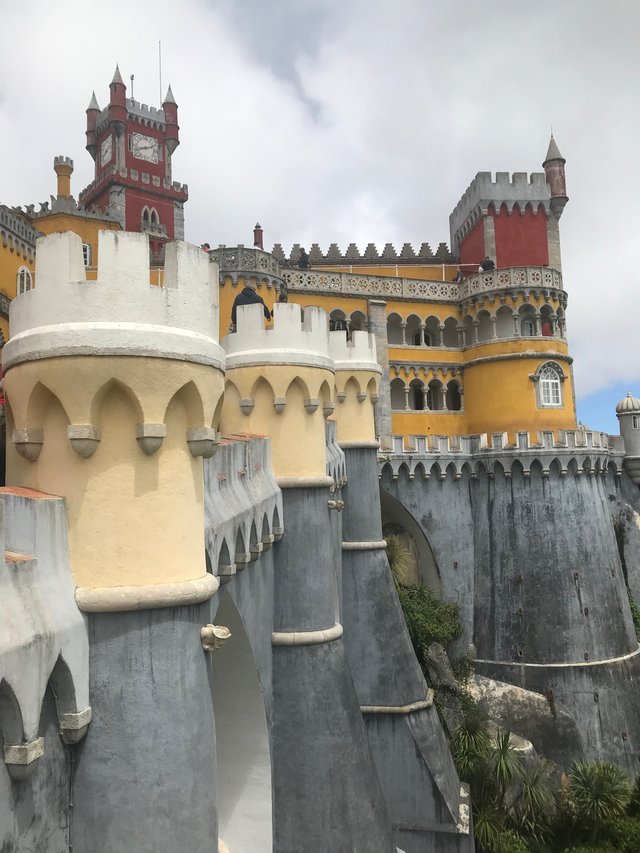
We continued to drive. Climbing a steep, winding road, we arrived at Pena Palace about 30 minutes after leaving the city. This colorful, Romanesque castle was a former monastery and summer residence for the King of Portugal. Commanding a towering view from its perch above the heavily forested Sintra National Park, you can see as far as the Atlantic Ocean to the west and Lisbon to the east.
We eagerly toured this fantasy palace, a UNESCO World Heritage Site. Fanciful colors, Arabic arches, turrets, and a massive clocktower adorn the outside. Inside, elaborately decorated spaces, Royal relics, and historical artifacts entertained. The Palace is a Must-See when you visit southern Portugal.
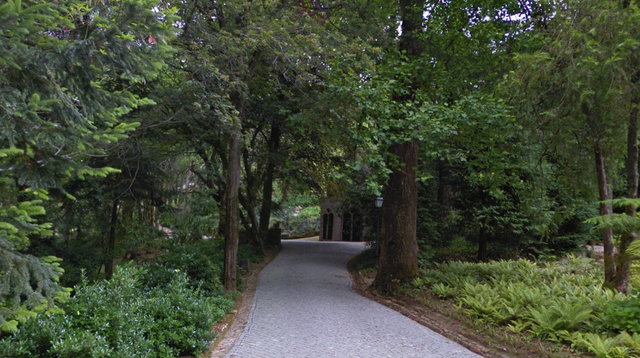
Beneath Pena Palace lies Parque da Pena. This heavily forested preserve is approximately 500 acres in size, featuring plantings and trees imported from around the world. Many unique buildings and features permeate the Park, including stables, ponds, and chalets. It is seemingly endless, and a maze of paved paths leads from one picturesque scene to another. The Park itself is another Must-See.
Now, several hours into our tour of Palace and Park, we decide to make our way around the hillside and to Sintra's city center for dinner. Well-worn trails lead around the edge of the grounds, providing scenic views of the surrounding towns. In some spots, the climb can be a bit arduous as the elevation rises and falls swiftly.
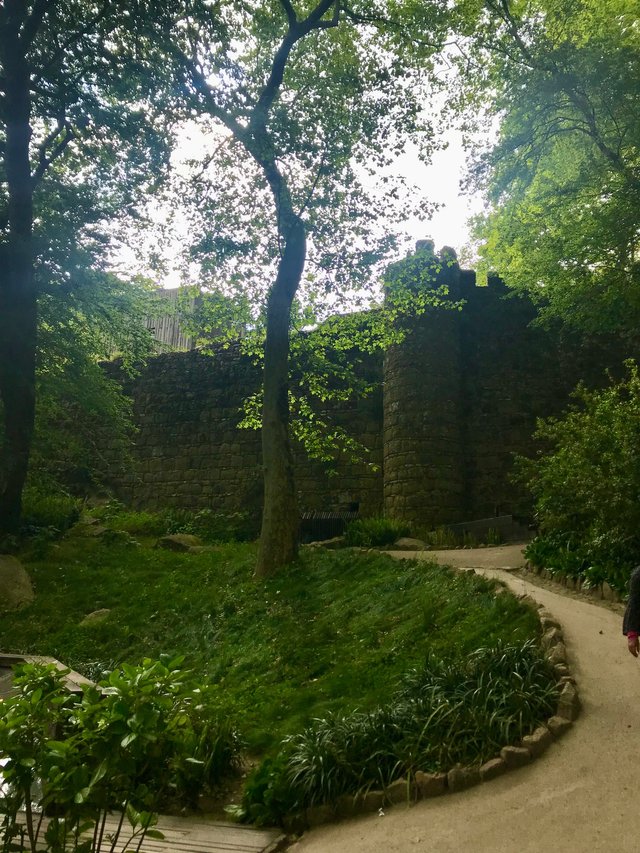
And then, poking out of the heavily vegetated scenery, I spy a well-kept stone wall. Familiar parapets and merlons associated with every castle wall ever constructed form a gray, saw-tooth visage amongst the greenery.
Strikingly different from the colorful, almost flamboyant ramparts of Pena Palace, these walls were dour and severe. The Palace, constructed for comfort and style, was opposite to the castle's build for strength and defense.
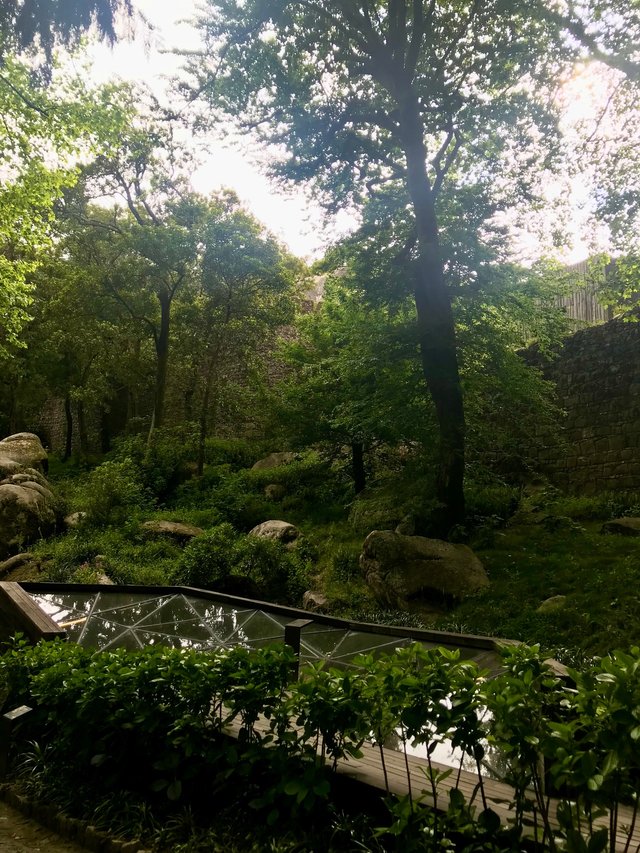
Checking the map of the grounds, I see the moniker: Castelo dos Mouros. Castle of the Moors. To exit the Park, we would have to walk right through its lower levels.
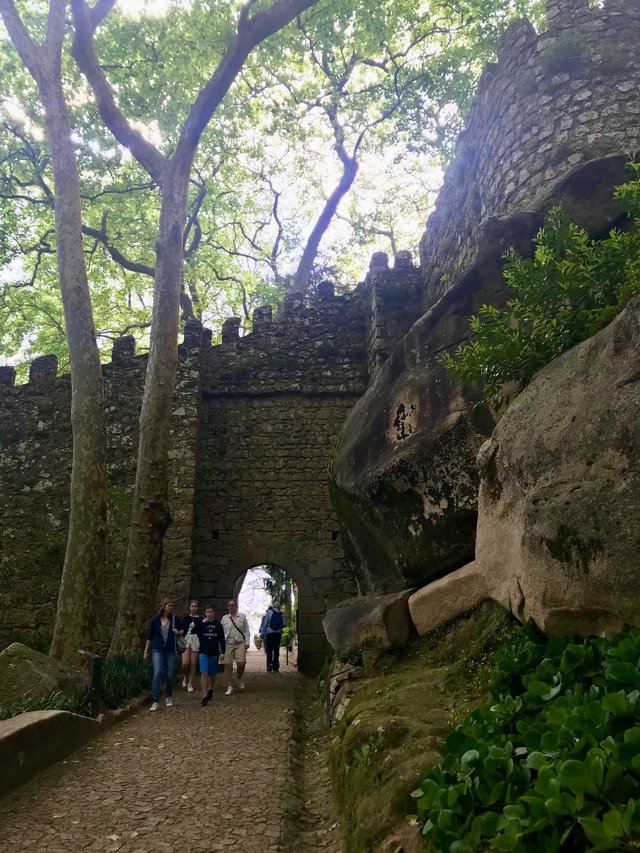
Walking along the edge of this rampart clouded by forest green, we eventually arrive at an arch cascading across the stone path. Heavily covered with lichen but appearing as sturdy as when first built, we passed through the slender archway and to the other side.
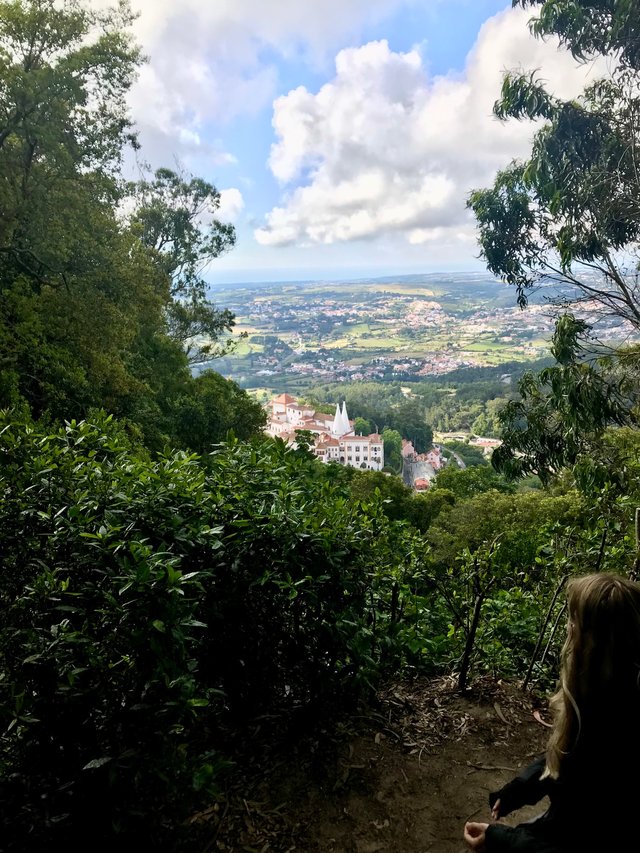
At set intervals, there were more stone outposts constructed outside of the castle walls. From these rocky outcrops, stunning vistas of the valley below were readily available. Atop this steep hill, the Moors could observe movement for many miles around their hold. And for us, we could follow the lush views of the entire Sintra range.
In its day, from southern Russia to Saudi Arabia and from Egypt to Spain, the whole southern half of the Mediterranean was controlled by one of four Muslim caliphates. Portugal lay in the hands of the Umayyad Caliphate.
After the death of the Prophet Muhammed, the Islamic Empire proliferated. The Moors reigned for 400 years in southern Portugal, extending their rule over most of Spain and as far north as the French border.
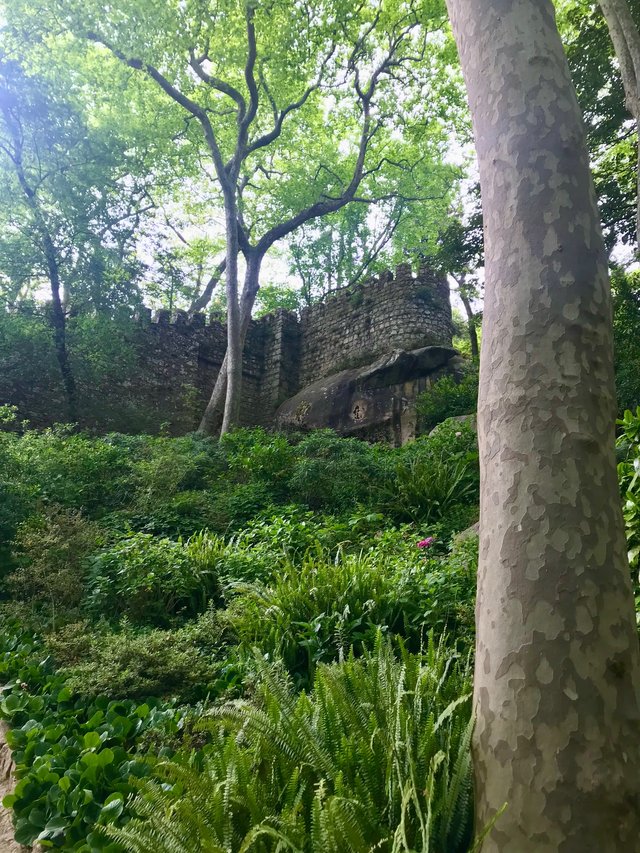
Northernmost Portugal, however, continually resisted the invaders. They were never entirely subdued and eventually carved out a tiny kingdom for themselves and grew in strength and size. Finally, in 1147, King Alphonso led his Catholic armies south to Lisbon and defeated the Moors.
Cut off from the caliphate, Castelo dos Mouros surrendered.
Used as a seat of county government and later by a small but robust Jewish community, the castle remained in use. Its sister, Pena Palace, would not come into being until the 1400s, and so its strategic perch atop the Sintra hillside remained somewhat relevant to the area.
By the 16th century, however, Castelo dos Mouros had been wholly abandoned. Deteriorating from disuse, the castle was reduced to near ruins in the 1755 Lisbon Earthquake. Fortunately, in the mid-1800s, King Ferdinand II of Portugal took an interest in the area and endeavored to repair and preserve the now ancient Moorish castle. He also acquired a small monastery on a nearby hillside that would eventually become Pena Palace.
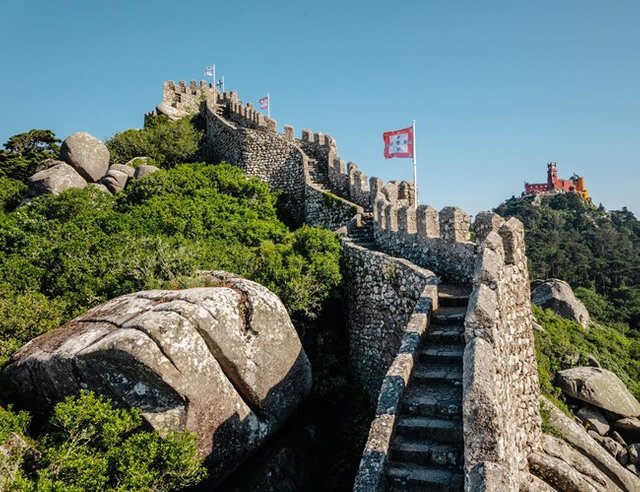
I had a strong urge to pay the entrance fee and walk up into the castle, but the day was getting long. Since breakfast in Lisbon, we hadn't eaten, and so hunger won out over curiosity, as it often does. We consoled ourselves by wandering around the castle's base for a bit before making the downward trek into Sintra's town square.
My research upon arriving home stressed what a colossal mistake this was.
Castelo dos Mouros is a destination that deserves its own due. 1500 feet of walled fortress and inner grounds offer visitors hours of exploration. From the top, stellar views of the surrounding country, including that of Pena Palace, nearby. And from inside, a unique perspective into 8th-century Moorish architecture and history.
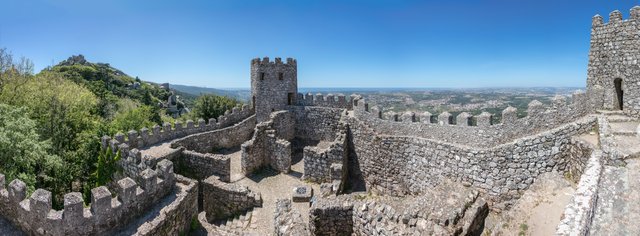
As we wound our way down the sheer hillside, I contemplated the fate of Castelo dos Mouros here in Portugal. Once, an essential cog in a giant wheel of Muslim empire, now a lonely memorial, cut off from its Umayyad creators.
Like Nuno, our driver, how sad to be this castle, removed from all you find dear and familiar. When the Moors ruled Portugal, Castelo dos Mouros was an internal component of its security. However, once irrevocably dislodged from all those you love and protect, perhaps it is all one can do but survive.
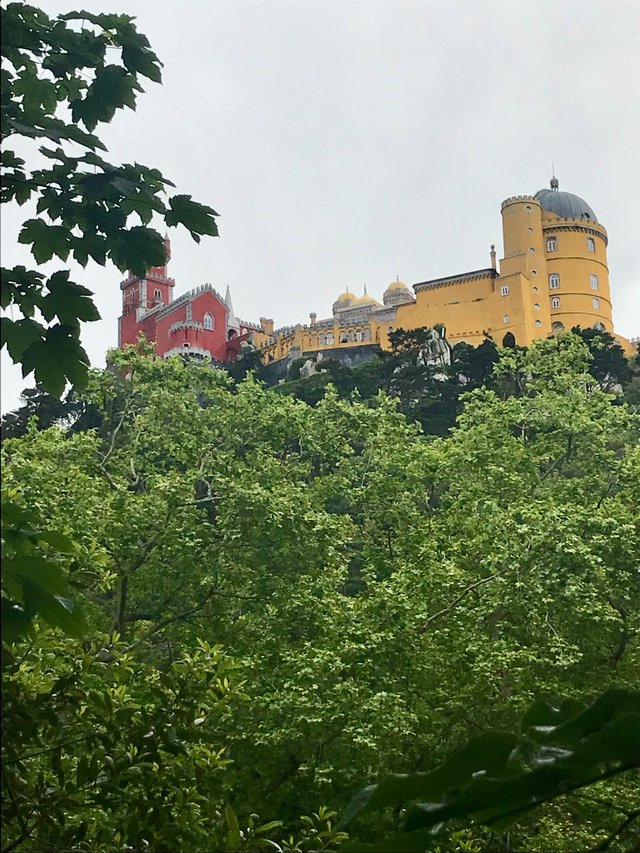
When in southern Portugal, dedicate an entire day to traversing Pena Palace, Parque da Pena, and Castelo dos Mouros. While I regret not planning a fuller day there, I am so grateful for the time we did commit to uncovering this forested masterpiece in the Sintra highlands.
Cheers!
All photos were taken by the author with iPhone except as otherwise indicated.
References:
parquesdesintra.pt
localhistories.org
handluggageonly.co.uk
wikipedia.org
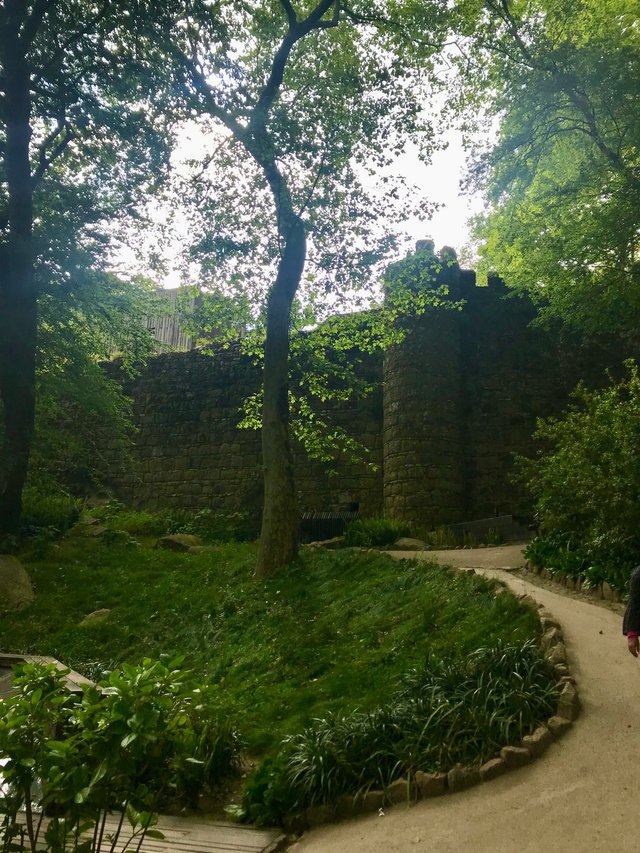
Congratulations @braveboat! You received the biggest smile and some love from TravelFeed! Keep up the amazing blog. 😍 Your post was also chosen as top pick of the day and is now featured on the TravelFeed.io front page.
Thanks for using TravelFeed!
@for91days (TravelFeed team)
PS: You can now search for your travels on-the-go with our Android App. Download it on Google Play
Safety and security of items are guaranteed at pawn shops. Collateral is stored in secure environments, protecting it from theft or damage. This peace of mind is valuable for boca raton pawn luxury borrowers who want to ensure their items are safe while securing a loan.